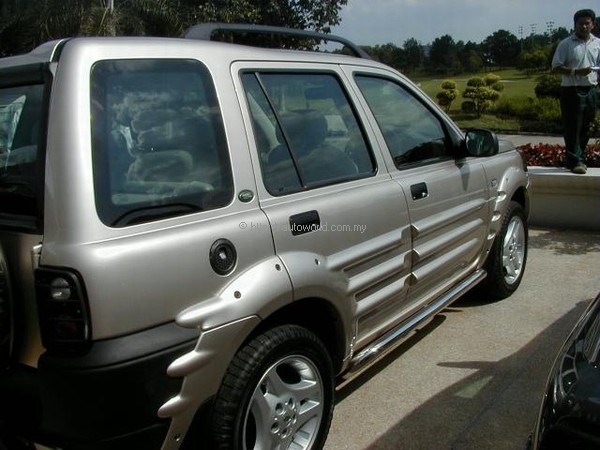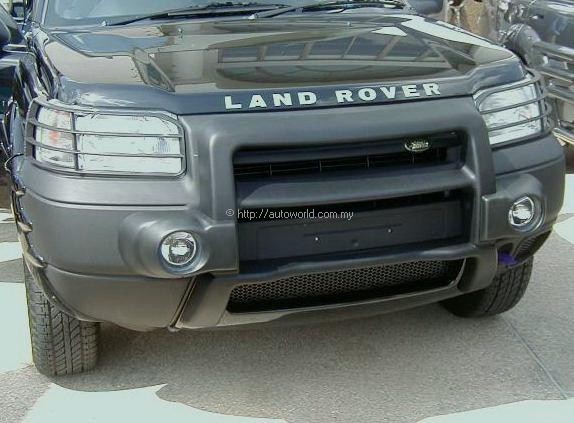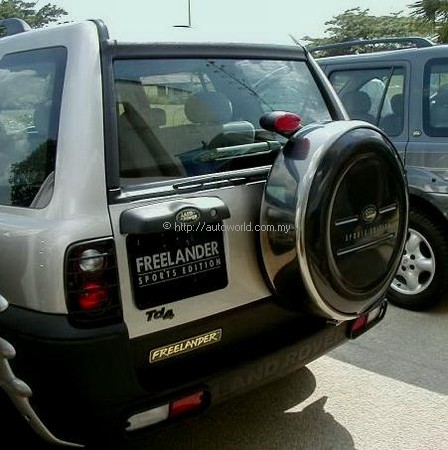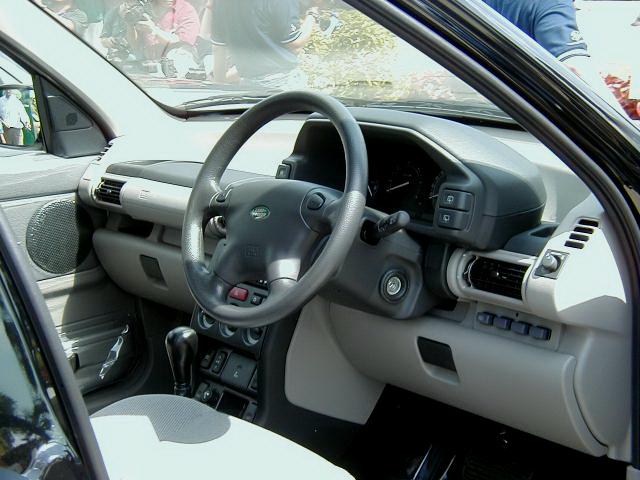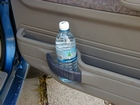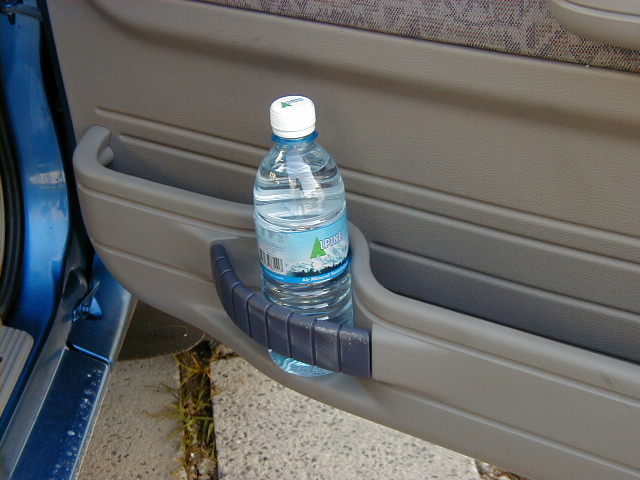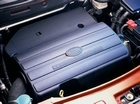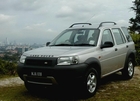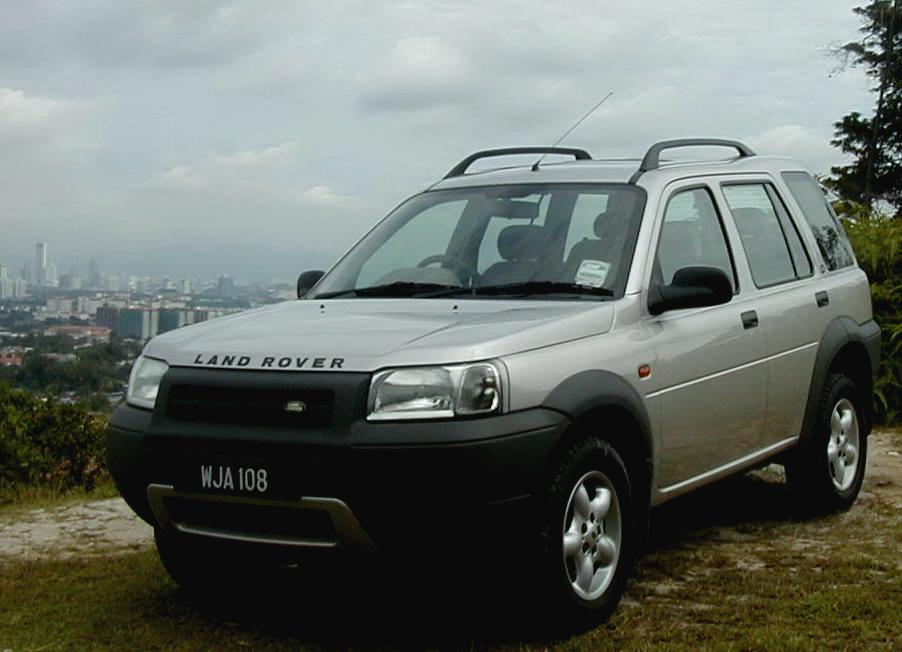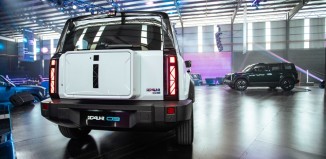Land Rover Freelander Sports Edition
Land Rover Malaysia (LRM) is certainly driving into 2003 in a generous mood. Its latest Freelander Sports Edition, introduced to the media today at Bukit Kiara, comes with a package of accessories said to be worth about RM30,000 … and yet costs only RM2,500 more than the standard Freelander Td4 5-door!
The addition of this special version to the line-up is part of LRM’s aim to grab a bigger share of the SUV market this year and its strategy includes not only product enhancements but also activities to reward loyal customers.
The Freelander Sports Edition (not to be mistaken for the Freelander SE3 which is sold only in North America) is unique to the Malaysian market. It was developed with feedback from customers and is a collaborative effort between Land Rover Malaysia, Land Rover UK and Land Rover Asia (which is located in Kuala Lumpur).
For the extra money, you get some really great goodies, the most prominent being the sports bodykit which has horizontal ribbing along the sides. This bodykit first appeared on the unique 3-door version and was available as an option all along. Also included is a stainless steel side step on either side although this is more for looks than for stepping as it doesn’t project out much.
Also making the Freelander Sports Edition stand out is the A-frame protection bar which goes over the nose. This is a lightweight but still tough polyurethane accessory which provides a fair amount of protection in a collision. It is an original Land Rover accessory and thus fits perfectly on top of the bumper.
Also as a complement to the protection bar are auxiliary lamp pods which merge smoothly and match the contours of the protection bar. Bright Cibie spotlights are provided in a recess on each pod.
Giving the rugged look are lamp guards for the headlight, rear lights and bumper-mounted lights. These are also of high-impact polyurethane material which is not only light but also corrosion-resistant.
The final item in the Sports Edition package is a spare wheel case with a stainless steel rim. This case adds a touch of class while giving good protection to the spare wheel and it can also be locked. Of course, an exposed spare wheel mounted on the rear door would make for a more rugged image! Incidentally, the spare wheel cover is for a 16-inch standard ‘Freedom’ alloy rim.
In other respects, the Freelander Sports Edition is the same as the standard Td4 version and these units are also the 2003 models. Though no specific mention is made of technical changes, it is normal for companies to make changes in little details over time so it is safe to say that the 2003 model has improvements under the skin.
According to LRM Marketing Manager Syed Azlan, the Freelander Td4 has been the most popular, hence the focus on this engine variant for the Sports Edition. Its turbodiesel engine is a Euro-3 compliant “Green Engine” (meaning owners save 50% on roadtax) appeared with the second generation a couple of years ago and has some of the best diesel technology in its design. Unlike some other compact SUVs which use powerplants adapted from passenger cars, the Td4 engine has been specifically developed for use in this Land Rover model.
With a combination of common-rail, very high pressure direct injection and a variable nozzle turbocharger, plus intercooling, this is a high-performance diesel which develops 82 kW (112 ps) of power at 4,000 rpm and 260 Nm of torque at just 1,750 rpm. Additional features include twin overhead camshafts, an alloy cylinder head and an innovative 16-valve layout that combines two different intake port configurations on each cylinder.
The Freelander also has a tiptronic-type automatic transmission which Land Rover calls ‘CommandShift’. This is a 5-speed transmission which has both manual and automatic shift modes with adaptive programming that adjust shifting patterns to each driver’s style.
Hill Descent Control (HDC) is something which rivals in the Freelander’s class have yet to match. It’s a sophisticated feature which takes away the ‘white-knuckle’ experience of driving down a steep slope in off-road conditions. All the driver has to do is activate HDC and the system maintains a steady speed of 9 km/h going downhill; no need to brake or do anything at all, other than steer.
The four-wheel independent suspension and centre-mounted steering systems originally evolved from a clean sheet, with Land Rover engineers choosing a four-wheel MacPherson-strut arrangement mounted to strengthened steel subframes both front and rear. Generous amounts of wheel travel are provided for off-road capability and to increase ride quality, strut friction is minimized by the use of offset coil springs.
The suspension delivers a high level of longitudinal compliance, allowing the wheels to move backward as well as upward, relative to the body, when hitting bumps. In most vehicles, fore-aft movements are typically around 5 mm, but the Freelander has double this amount. This suspension geometry improves ride comfort by giving the damper more time to work as the suspension reacts to a bump.
The brake system consists of large and thick ventilated front discs with large-diameter rear drum brakes. A dual-mode operating mechanism within the drums gives twin leading shoe geometry for the handbrake, ensuring greater holding power for low lever effort, while retaining single leading shoe operation for the service brake.
The ABS for the brake system includes Electronic Brake-force Distribution (EBD) for optimum braking whatever the load on board. The Freelander is still the only vehicle in its class to have Electronic Traction Control as standard, ensuring superior on-road grip when conditions are slippery.
In addition to the strong active safety features built into the Freelander, it also boasts of a superior level of passive safety with standard equipment that includes dual front airbags and height-adjustable seatbelts with pre-tensioners for front-seat occupants, and three-point seatbelts for all passengers in the rear.
High-set, strong side-impact beams are built into all four side doors, with additional reinforcements around the front-door apertures to help protect the cabin space and retain the ability to open the doors after an impact (the door latch mechanism exceeds typical anti-burst load requirements by 2.5 times).
An important safety-related point to note about the fitment of the A-frame protection bar in the Freelander Sports Edition is that it is an original Land Rover accessory engineered to be compatible with the sensors of the airbag system for this vehicle. This is extremely important to owners because of the influence of such an accessory on the proper functioning of the airbag systems. It’s an issue which many manufacturers are concerned about because the initial impact on the bar which is a bit forward of the nose may cause the sensor to trigger off the airbag at the wrong moment – or worse, the sensor itself may not register an impact and not send the crucial signal to the airbag inflator.
The Freelander was the first Land Rover to be built with monocoque body construction (traditional Land Rover vehicles have incorporated a body-on-chassis approach). Monocoque construction – which is typical for passenger cars – means the body and chassis are welded as a single unit, providing better strength and durability without excess weight. Ride comfort and handling are also better.
However, being Land Rover, things have been done a bit differently. When viewed from beneath, one might easily conclude that the Freelander has a separate frame. Indeed, there are substantial longitudinal box-section rails running the length of the underbody, tied together and to the platform with integral crossmembers, a design similar to the ladder-frame construction beneath other Land Rovers. Adding further strength to the body are substantial front and rear subframes, which are bolted rigidly to the body shell.
The cabin of the Freelander impresses with its many practical features and thoughtful layout. It is clear that the interior designers have made much use of feedback from Land Rover owners who have driven their vehicles all over the world. Clever ideas like the bottle holders on the front doors – with pockets that can actually take the weight of a man – and the netting on the ceiling (an idea adapted from the Discovery) make the Freelander stand out amongst others in its class.
“The Freelander Sports Edition is an addition to the Freelander range for Malaysia and we are offering it at this special price of RM197,500 – excluding insurance premium – for a limited period,” said Ali Shuib, Managing Director of LRM. “We believe it is an extremely attractive offer which should not be missed!”





